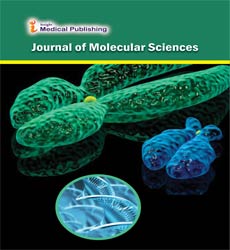BIOINFORMATIC STRATEGY AND DIAGNOSTIC YIELD OF WHOLE-EXOME SEQUENCING IN 124 PATIENTS WITH RECURRENT INFECTIONS OR AUTOIMMUNITY.
Lugo Reyes
Saul O Spero Technologies Inc, Mexico
Citation: Lugo Reyes Saul O Spero Technologies Inc, Mexico, USA84501, London,UK, April21st,2021
Abstract
INTRODUCTION: The National Institute of Pediatrics is a referral center where we discuss and pursue the molecular and genetic diagnoses of patients with suspected inborn errors of immunity (IEI) from around the country. Since 2019, we process and analyze our own whole-exome sequencing (WES) results at the ID lab. Assessing our diagnostic yield as a measure of performance and quality control might help optimize processes, improve patient selection and resource allocation.
OBJECTIVE: To characterize our patients with suspected inborn errors of immunity and WES, to compare our diagnostic yield, and to identify attributes that might predict a positive diagnosis.
METHODS: Patients were diagnosed clinically and deemed high priority for sequencing by their clinicians. We obtained two FASTQ files per patient to complete the bioinformatic workflow using Galaxy for quality control, mapping & alignment of the reads, as well as variant detection, annotation, and filtering. We defined diagnostic yield as the proportion of patients with a genetic diagnosis after WES results analysis.
RESULTS: 124 patients from 27 states in Mexico, mean age 9.3 years (range 0.25-37 years), 56% male, 16% dead. In 56/124 (45%) analyzed exomes, we found rare pathogenic variants in at least one gene known to cause IEI that matched the patients’ phenotype and pertained to the IUIS 2020. In 5 others, a monogenic diagnosis different than IEI was found, for a final diagnostic yield of 61/124 (49%). In nearly half of the patients who had died before having their exomes analyzed, a genetic etiology was identified.
DISCUSSION: We describe our experience with 124 exomes at home, a first report from our country. Our results compare well with those from other centers. No feature by itself predicts a definitive diagnosis.
Open Access Journals
- Aquaculture & Veterinary Science
- Chemistry & Chemical Sciences
- Clinical Sciences
- Engineering
- General Science
- Genetics & Molecular Biology
- Health Care & Nursing
- Immunology & Microbiology
- Materials Science
- Mathematics & Physics
- Medical Sciences
- Neurology & Psychiatry
- Oncology & Cancer Science
- Pharmaceutical Sciences
